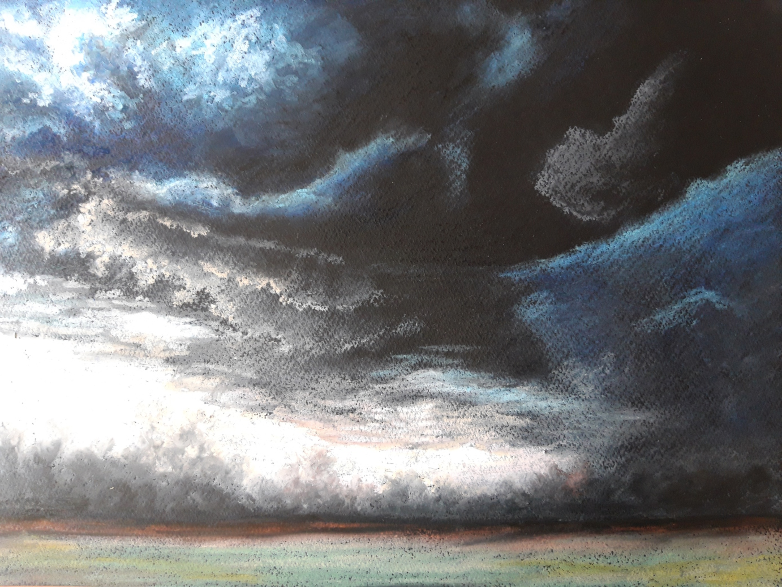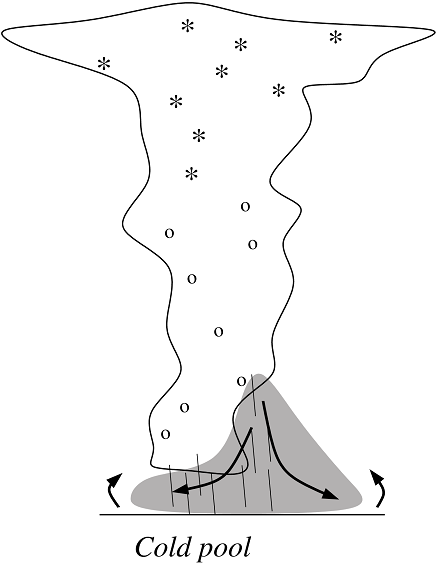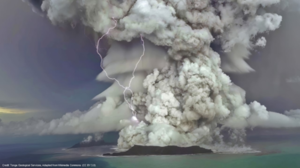Cold Pool
A cold pool can put an end to the adventure for a cumulonimbus, or on the contrary give him new strength to grow as an even greater storm cloud. It all depends on where it is located.

Gusts during a storm, oil pastel by Camille Risi from a photograph from www.extremeinstability.com.
Specific features
In the summer, just before a storm appears, the air gets cold and the winds picks up: that’s the cold pool making its entrance. We can see cold airflows coming out of the cloud in swirls that crushes to the ground. This generates gusts of wind that throw around the dust, leaves of litter lying on the ground. Time to find shelter.
Origin
 When rain falls out of a cumulonimbus, some of it evaporates and cools the surrounding air. The same thing happens when you come out of the shower, if you feel cold then, it is because the water on your skin evaporates and cools your body. In the atmosphere, the now cold air becomes denser and rushes rapidly towards the ground, crushing on it and creating gusts of wind. This is the cold pool.
When rain falls out of a cumulonimbus, some of it evaporates and cools the surrounding air. The same thing happens when you come out of the shower, if you feel cold then, it is because the water on your skin evaporates and cools your body. In the atmosphere, the now cold air becomes denser and rushes rapidly towards the ground, crushing on it and creating gusts of wind. This is the cold pool.
When to see it
In the few minutes preceding a storm.
Evolution
If the cold pool is located just under the cloud, right where the airflow of warm air brings the humidity in altitude, it will cut the power source and pull the rug right from under the cloud, that will eventually dissipate. But, as it crushes to the ground, the cold pool creates gusts of wind that lifts the air, forming new storm cells. This is how cold pools allow storms to propagate. Whether they kill a cloud or help to form new ones mainly depends on the winds in the lowest levels of the atmosphere.






